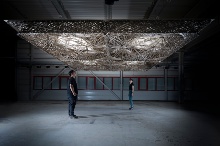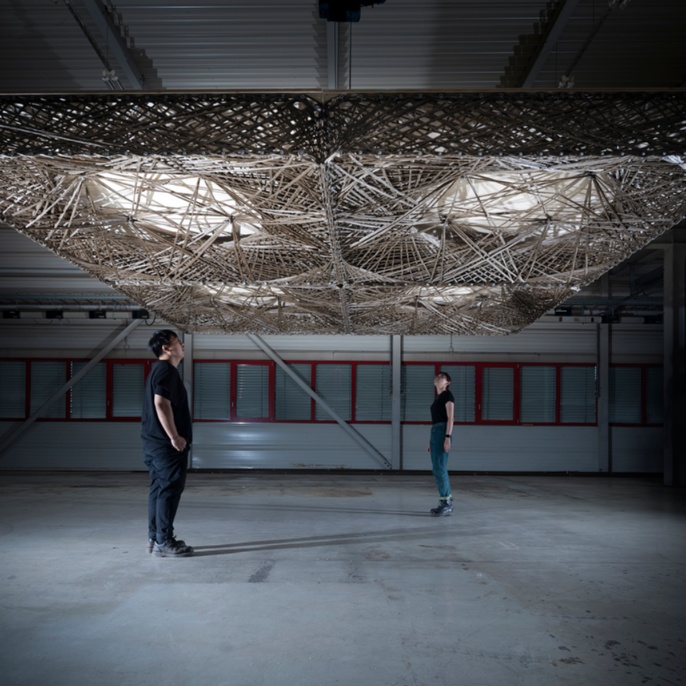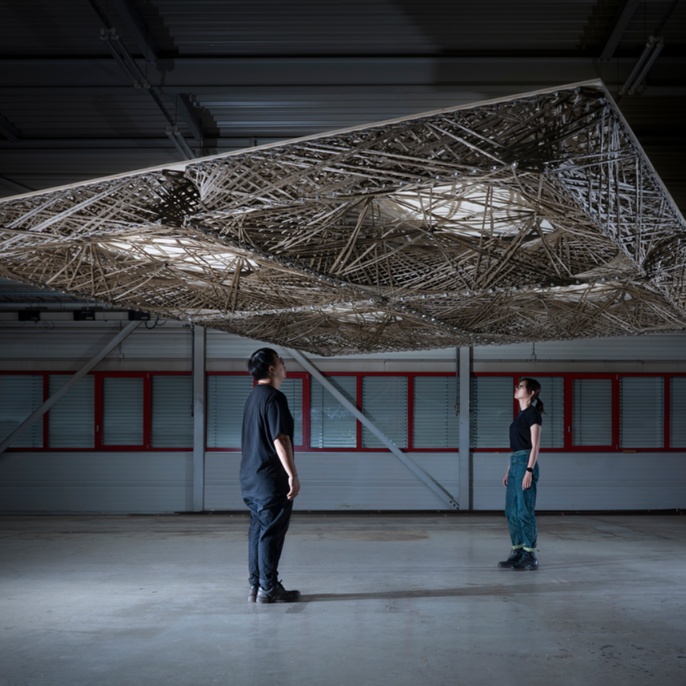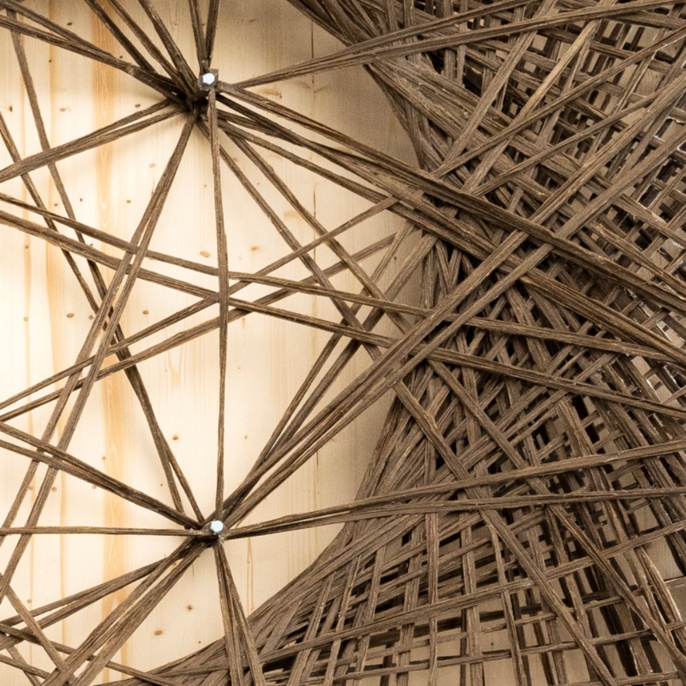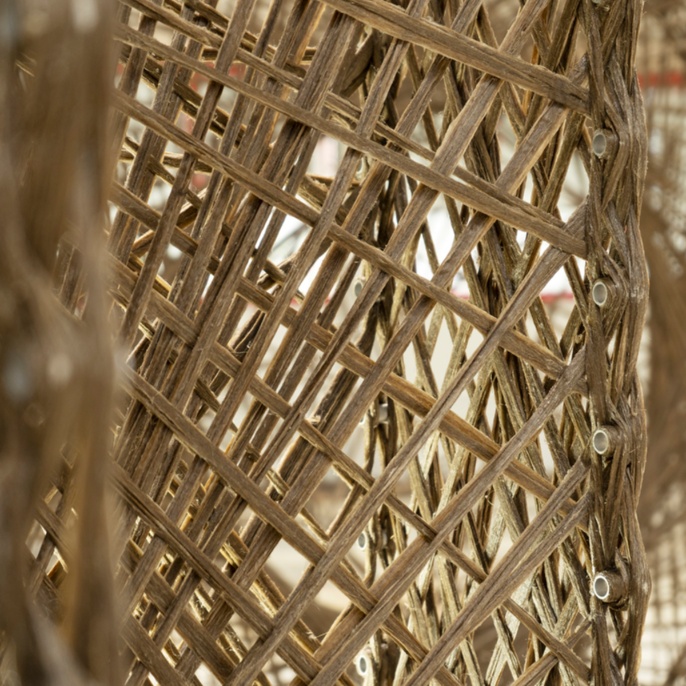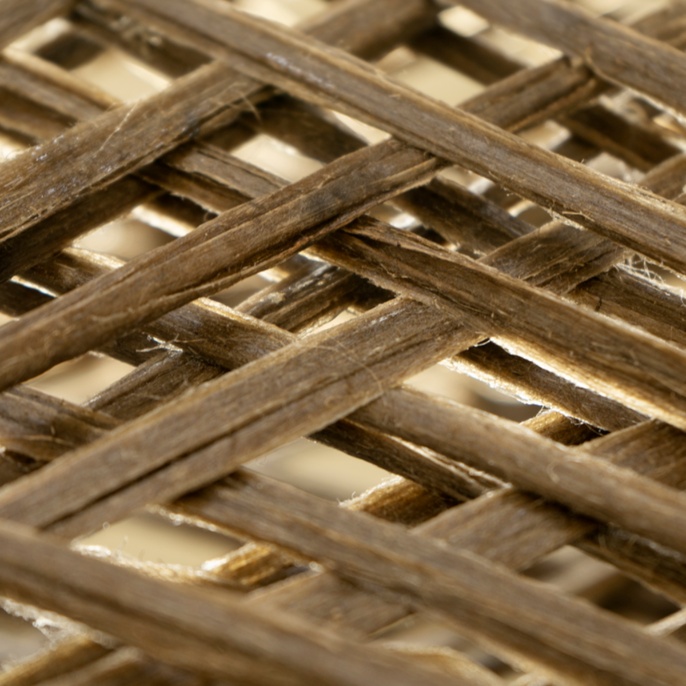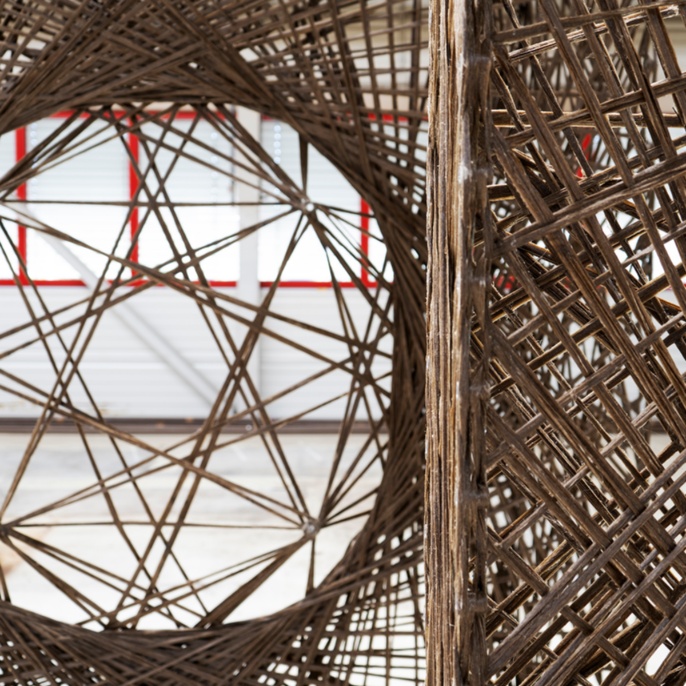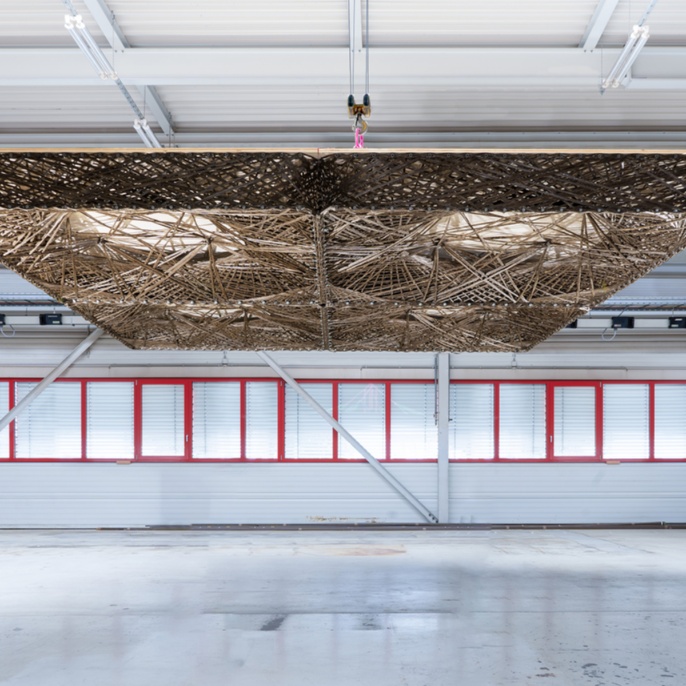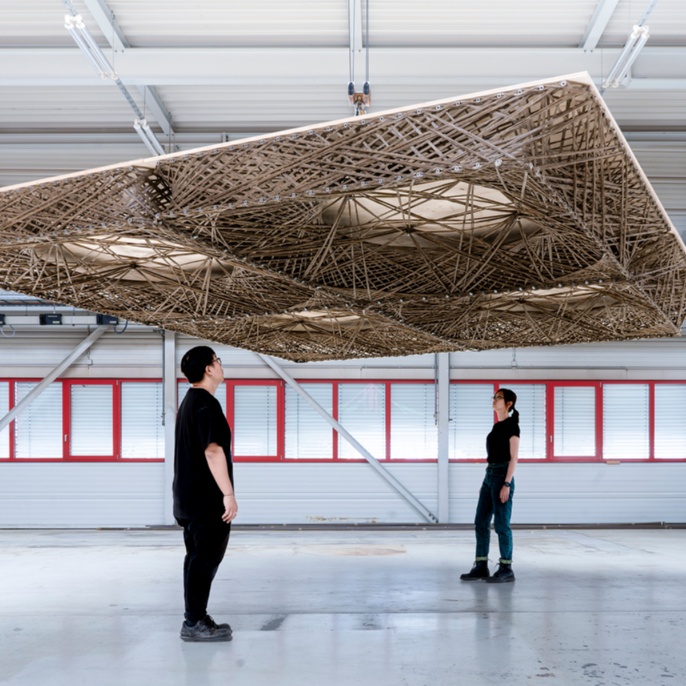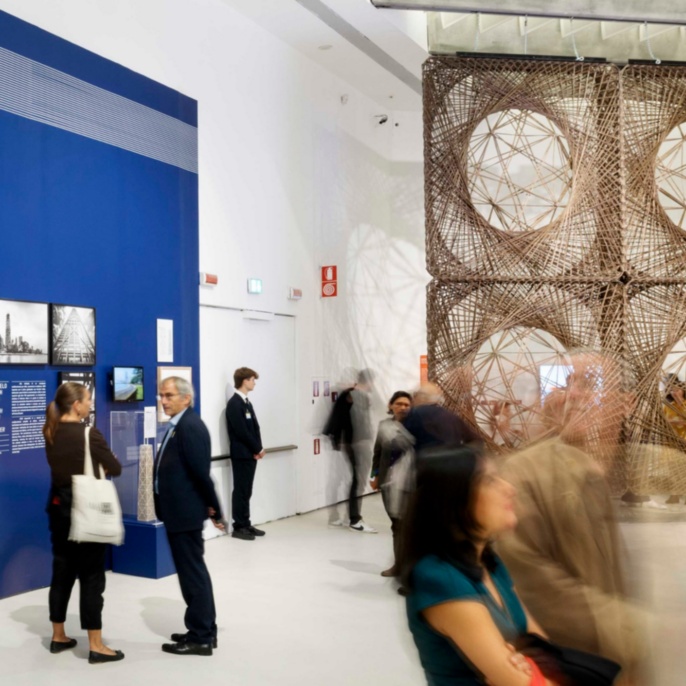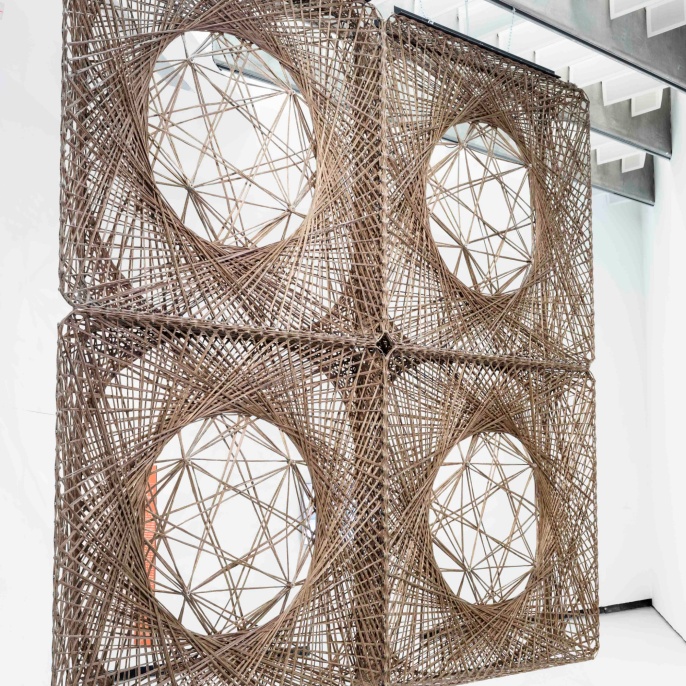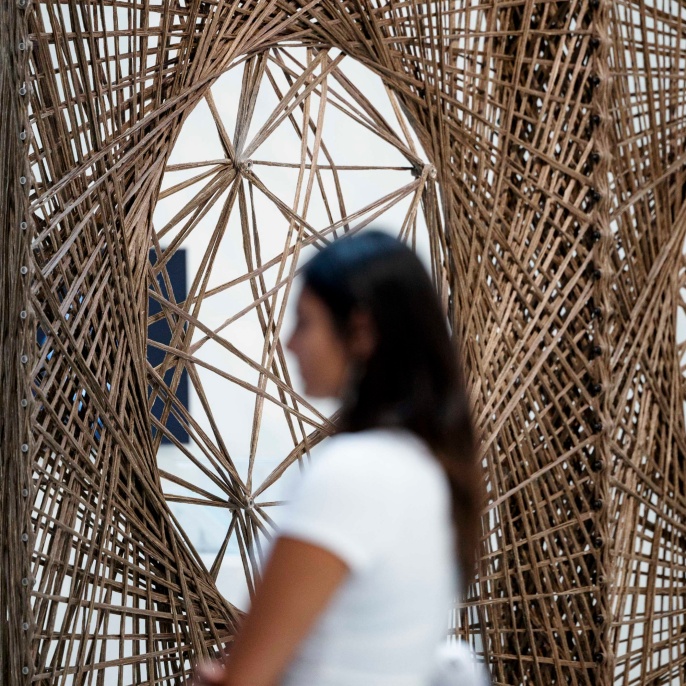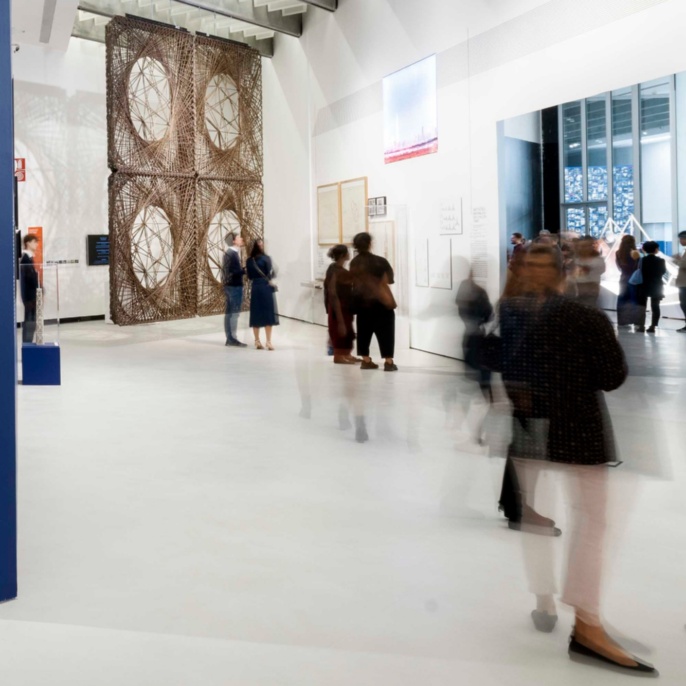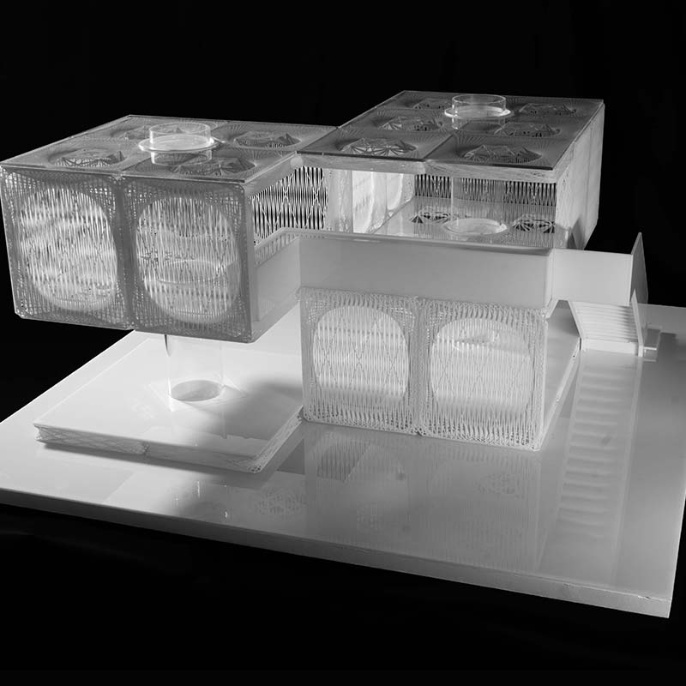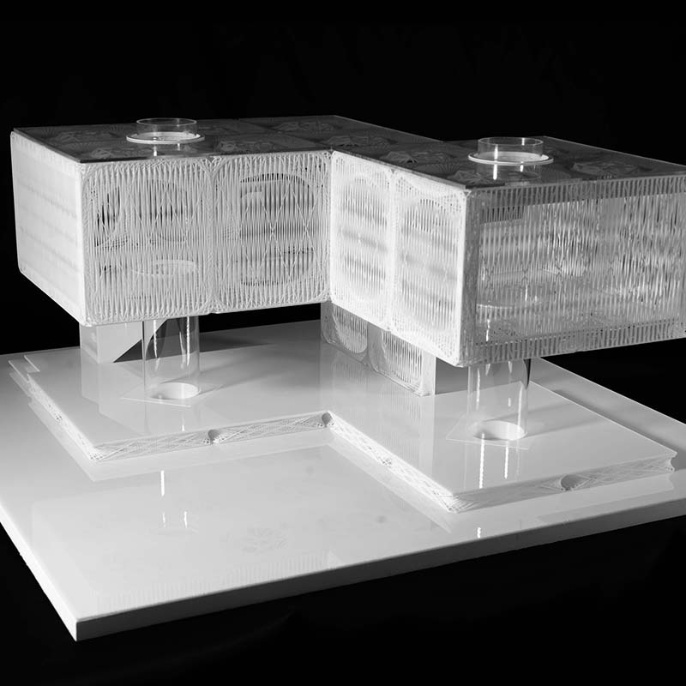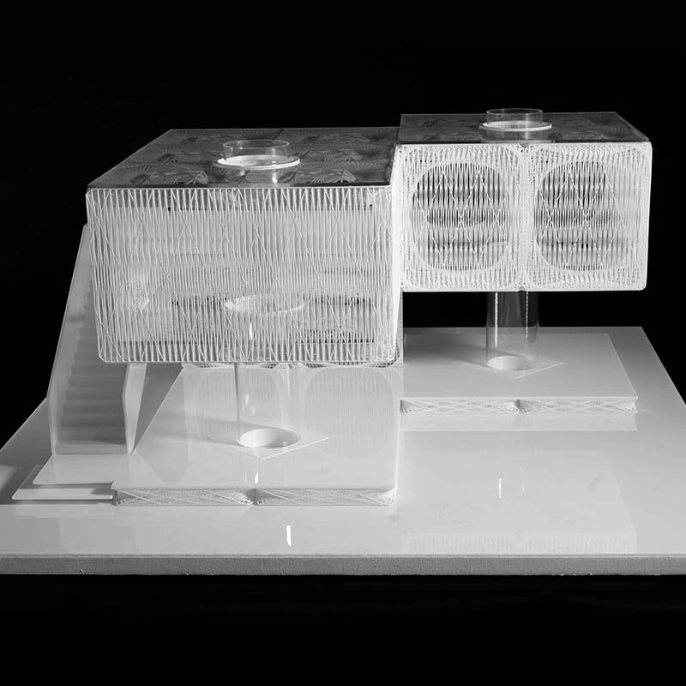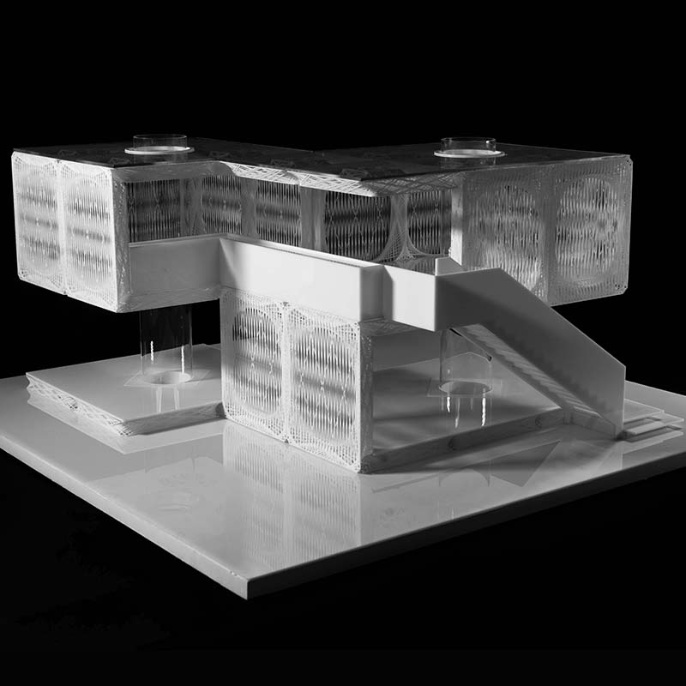Photographs by ICD/ITKE/IntCDC University of Stuttgart
Exhibition Photographs © Musacchio, Iannello, Pasqualini and Fucilla, courtesy Fondazione MAXXI
Maison Fibre Models by ICD/ITKE/IntCDC University of Stuttgart
Fibrous Tectonics: Towards Bio-based and Bio-inspired Architecture
Technoscape – The architecture of engineers
curated by Pippo Ciorra, Maristella Casciato
Fondazione MAXXI - Museo nazionale delle arti del XXI secolo
01 October 2022 – 10 April, 2022, galleria 4
Fibrous Tectonics Bio-basierte und bio-inspirierte Architektur
The Institute for Computational Design and Construction (ICD), and the Institute for Building Structures and Structural Design (ITKE) at the University of Stuttgart, have developed a novel hybrid building system made from flax fibres and wooden panels, which aims to combine the effectiveness of bio-inspired fibrous structures with the ecological advantages of bio-based fibre materials. Enabled by advanced design computation and simulation as well as robotic fabrication processes, and based on design principles transferred from natural fibrous systems, this research opens up a new approach to fibre-reinforced composite structures in architecture.
As part of the exhibition Technoscape at the MAXXI Museum in Rome, a full-scale prototype presents this significant step in the research of the two institutes. The large fibrous slab structure explores novel, bio-inspired and bio-based tectonics, which are at the same time materially efficient, ecologically sound, and architecturally expressive, and tell the story of deep interrelations between technology, biology, and culture.
Fibrous Morphology in Biology and Architecture
In Biology most load-bearing structures are fibrous composites. They are made-up of fibrous elements, which are embedded in a matrix material that surrounds and supports the fibrous reinforcements. The fibres thereby maintain their relative positions and exhibit high tensile strength, allowing them to withstand compressive forces. While the fibre and matrix elements remain distinct in the composite material, their combination results in superior performance characteristics far beyond the ones of the individual constituent parts.
The astounding functional integration, performance capacity and resource effectiveness of biological fibre structures is enabled by morphological differentiation, which is the summary process of each element’s finely calibrated adaptation to its specific performance requirements and environmental impact. Because this differentiation is mainly achieved by changes to the fibrous organisation and layout, biology can be understood as providing a rich repertoire of fibre arrangement for architectural design.
The development of related computational design, simulation and fabrication processes for architecture has been investigated in various projects by ICD and ITKE. As an important next step, the research on bio-inspired fibrous morphologies now expands towards bio-based fibrous materials, such as hemp and flax fibres. These regionally available materials are renewable in short crop cycles and offer the possibility to combine the effectiveness of differentiated, load-adapted fibrous structures with the ecological benefits of using natural materials.
Novel Fibrous Hybrid Building Systems
The multidisciplinary design research on fibrous morphologies in architecture offers several interesting insights. Working directly with linear fibres or fibre rovings, instead of pre-manufactured fibre mats or textiles, offers significant new possibilities for design. The ability to orient each fibre individually in space across several layers of hierarchy begins to blur the boundary between material and structure, and thus extends the scope of design towards the realm of “designable” materiality. In contrast to an assembly of parts with defined material properties, here the local differentiation of material characteristics within one overall structure becomes possible.
“Fibrous Tectonics” aims to bridge between the technical as well as cultural dimension of fibrous systems in architecture and the rich repertoire of fibrous morphology in nature. The full-scale bio-inspired slab structure is made entirely from bio-based materials. The 5m by 5m slab is made of four smaller fibrous modules, which expose the finely differentiated fibres at the bottom of the slab. Combined with wood panels at the top of the slab, the fibrous and wooden components together work as a novel hybrid structure, which is contextualised as a key element of the ICD/ITKE project Maison Fibre, which utilized conventional technical glass and carbon fibres, as exhibited at Biennale Architettura di Venezia 2021. In strong contrast to the installation in Venice, the MAXXI exhibit is built entirely from natural flax fibres. This shows how today’s technologies enable novel building systems based on bio-inspired design principles, advanced computational methods and robotic processes, as well as bio-based materials. From this arises the opportunity to extend, or even rethink, the established canon of architectural tectonics as a critical component for a sustainable, future-built environment.
ICD – Institute for Computational Design and Construction, University of Stuttgart
Prof. Achim Menges
Katja Rinderspacher, Christoph Schlopschnat, Christoph Zechmeister, Niccolo Dambrosio, Rebeca Duque Estrada, Fabian Kannenberg
ITKE – Institute of Building Structures and Structural Design, University of Stuttgart
Prof. Dr. Jan Knippers
Marta Gil Pérez, Yanan Guo
Student Assistance: Christian Steixner, Alan Eskildsen, Alina Turean, Xi Peng, Weiqi Xie
In collaboration with: FibR Gmbh Stuttgart
Project Support: Cluster of Excellence Integrative Computational Design and Construction for
Architecture (IntCDC), University of Stuttgart


